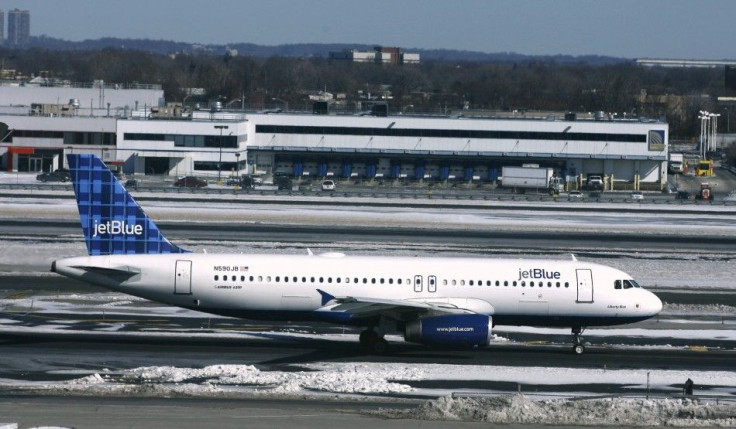Tarmac Delays: Knowing Your Rights as a Passenger

Thirty-three planes were stuck on the tarmac for more than three hours this past October, according to the Department of Transportation's Air Travel Consumer Report released Monday.
That number is the most reported in a single month since a new rule intending to limit long delays took effect last April.
To put the October number in perspective, from May 2010 to April 2011, the first year after the three-hour rule went into effect, there were just 20 occurrences of delays more than three hours, and none exceeded four hours.
The DOT said Monday that all of the October delays occurred on Oct. 29 following a rare mid-autumn snowstorm in the Northeast and involved flights bound for New York area airports. Furthermore, nearly all of them took place at the airports to which these flights were diverted, like Bradley International Airport in Hartford, Conn.
The longest delay reported was for a JetBlue flight from Fort Lauderdale, Fla. that sat on the tarmac for nearly 8 hours. The captain on that flight begged for help to get his plane to the gate, arguing that passengers had become unruly.
Within a week after the incidents, FAA officials held conference calls with both national and regional airports to discuss problems in the flow of air traffic. According to top officials at the FAA, much of the day's travel chaos was avoidable through better communication between airlines, airports, and air traffic controllers.
In April of last year, the DOT introduced new regulations that require a domestic flight to return to the gate or enable passengers to exit the aircraft if tarmac delays exceed three hours. The same rule applies after four hours for international flights.
According to the new rule, airlines in violation can be fined up to $27,500 per passenger.
In November, American Airlines affiliate American Eagle was hit with a 900,000 fine for keeping hundreds of passengers cooped up on planes in Chicago earlier this year.
The steep fine marked the first time the penalty was enforced, and while much larger fines have been issued to airlines for incidents that violated federal safety regulations, this was the largest fine paid by a carrier in a consumer protection case not involving civil rights violations.
Often low-cost airlines like JetBlue and American Eagle are hesitant to allow passengers off planes because contracts typically state that passengers will be reimbursed for hotels, food and transportation. Consequently, these airlines will do everything they can to keep passengers on board in hopes that the plane will be allowed to take off again.
Understanding Your Rights
Under the new U.S. Department of Transportation regulations on tarmac delays, passengers were given several protections. Here's a look at some of the highlights:
- Airlines must return planes to the gate and let passengers off any time a flight is sitting on the tarmac for three hours (four hours for international flights).
- Adequate toilet facilities must be maintained and made available to passengers during the delay.
- Airlines must provide passengers with adequate food and water within the first two hours of any delay.
- Airlines must designate an employee to monitor flight delays and cancellations, respond to passenger concerns, and instruct passengers on the complaint filing process.
- Airlines must post and maintain updated flight delay data on their Web sites (to include information on flights that are frequently delayed) for each domestic flight they operate.
Since airlines must post flight delay information on their Web sites for every domestic flight, travelers can now research before booking to help avoid delays. By comparing delay trends flight-by-flight or even airline-by-airline, you can lessen your chance of a lengthy delay.
Things You Can Do to Prepare
Monitor the weather. Check the forecast for both your departure city and arrival city. It's not a bad idea to check out the forecast for the entire country as well. Most flight delays are caused by weather - therefore you are more likely to experience a problem in the winter months.
Many stories of tarmac terror involve hungry passengers. It's always a good idea to pack an extra meal in case of an emergency.
You may need to make a call in the event of a long delay, or you may just want to watch a movie on your laptop to make the time go by faster. Make sure to fully charge all electronics before flight.
Planning a trip to the restroom right before you board the plane and about 30 minutes before the plane lands is a good idea to prevent an uncomfortable situation in the event of a long delay with clogged toilets.
Print out the DOT's information on passenger protections against tarmac delays and keep in handy so you know your rights.
© Copyright IBTimes 2024. All rights reserved.






















